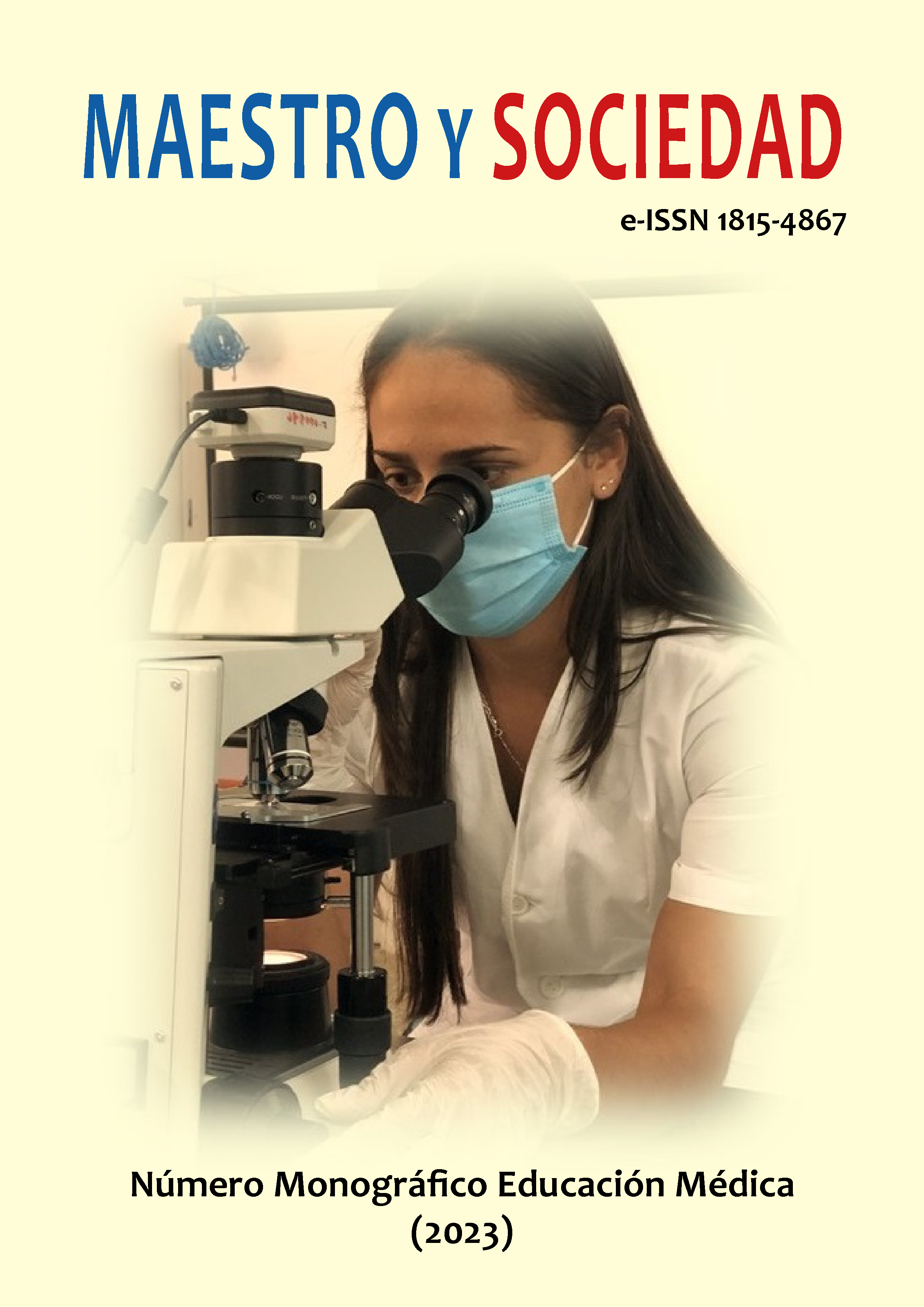Didactic strategy for the interpretation of biostatistical results
Didactic strategy for the interpretation of biostatistical results
Keywords:
students; teaching-learning process; Statistics; biostatistical results; didactic strategyAbstract
Introduction: The objective of the research was to develop a didactic strategy, based on developer learning to enhance the interpretation of biostatistical results in second-year students of the Medical Sciences major. Materials and methods: In the first moment of the investigation, the theoretical foundations that support the teaching-learning process of the subject Research Methodology and Statistics are analyzed, particularizing in the interpretation of the results, and in a second moment the problem is diagnosed. Current state of the preparation reached by the students to elaborate the didactic strategy that enhances the interpretation of biostatistical results in their future professional performance. Results: Developer learning requires a powerful system of intrinsic motivations. The intrinsic motivations are those that are based on the involvement and personal interest of the learner, the satisfaction and feelings of personal fulfillment for carrying out the learning activity. Discussion: Statistics prepares the future medical professional to apply methods that consist of collecting, summarizing, presenting biomedical information and interpreting the results, as well as applying health indicators to make interpretations in situations that arise in the sphere of public hygiene and epidemiological practice. Conclusions: The didactic strategy for the preparation of second-year students of the Medicine career in the interpretation of biostatistical results is characterized by having a systemic, contextual, interactive and self-regulatory nature.
References
Addine, F. (2004). Didáctica Teoría y Práctica. Editorial Pueblo y Educación.
Álvarez, C. (1989). Fundamentos teóricos de la dirección del proceso docente educativo en la Educación Superior Cubana. Ed. MES.
Batanero, C. (2000). Errores y dificultades en la comprensión de los conceptos estadísticos elementales. Revista International Journal of Mathematics Education in Science and Technology, 25(4), 527-547.
Byrne, N. y Rosenthal, M. (2014). Tendencias actuales de la educación médica y propuesta de orientación para la educación médica en América Latina. Educ Med Salud, (28), 53-93.
Garfield, J. B. et al. (2014). Investigación en Educación Estadística: Algunas Cuestiones Prioritarias. Statistical Education Research Newsletter 1(2). http://www.ugr.es/batanero/ARTICULOS/Investiga.pdf
Madiedo, A., et al. (2011). Fundamentos teóricos del tratamiento didáctico de los objetivos para la formación de habilidades intelectuales y prácticas en la carrera de Medicina. Educ Med Super, 25(2). http://scielo.sld.cu/scielo.php?script=sci_arttext&pid=S0864-21412011000200011&lng=es&nrm=iso&tlng=es
Santander, A. (2007). Una aproximación a la caracterización del rendimiento académico en Informática en Salud. Revista Cubana de Informática.
Downloads
Published
How to Cite
Issue
Section
License
Copyright (c) 2023 Katia Aguilera Díaz, Maidilis Beltrán Moret, Igor Vilches Fernández, Ania de Moya Luna

This work is licensed under a Creative Commons Attribution-NonCommercial-NoDerivatives 4.0 International License.
This journal provides immediate open access to its content, based on the principle that offering the public free access to research helps a greater global exchange of knowledge. Each author is responsible for the content of each of their articles.



























 Universidad de Oriente
Universidad de Oriente 